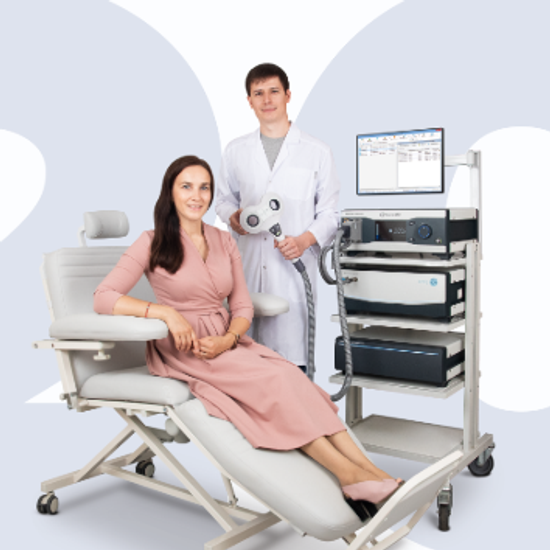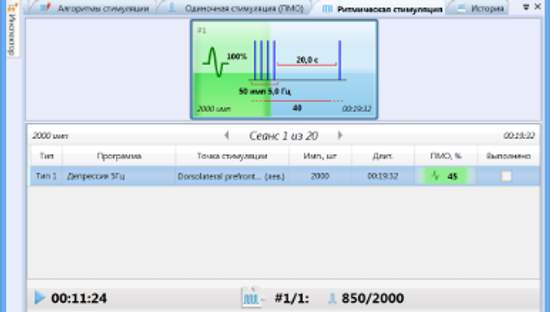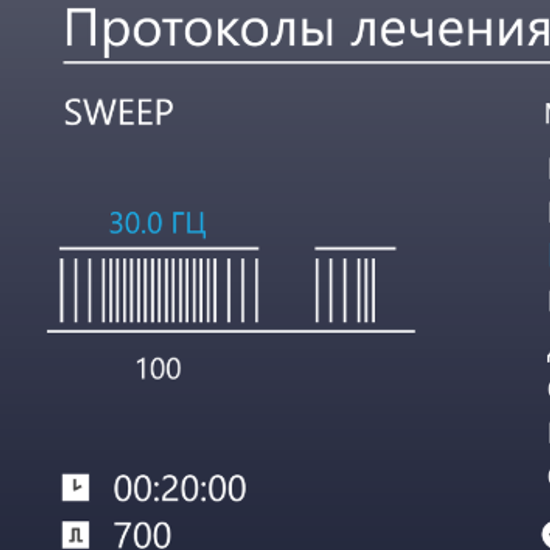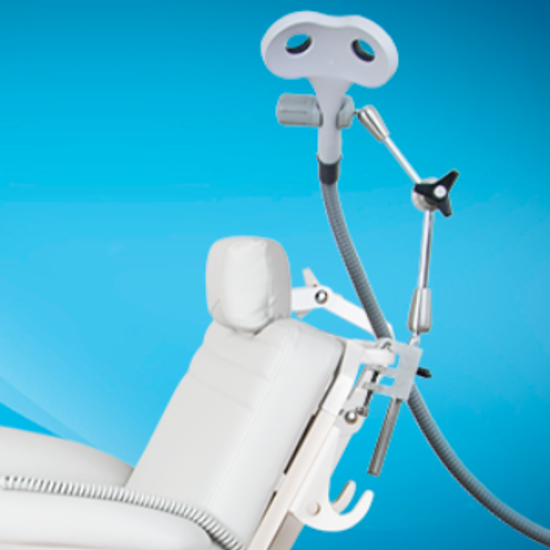REVIEW
Use in psychiatry, neurology, pediatrics
The principle of therapeutic transcranial magnetic stimulation (TMS) is as follows. A magnetic stimulator uses short-term magnetic pulses. The resulting high-intensity electromagnetic field freely penetrates clothing, soft tissues and bones of the skull and affects deep nerve centers, peripheral nerves, brain and spinal cord, which are inaccessible to other methods of stimulation. TMS, unlike, for example, electrical stimulation, is completely painless for the patient and does not require additional preparation.
To date, TMS is successfully used in the following areas:
- Psychiatry: depression, post-traumatic stress disorder, auditory hallucinations and negative symptoms in schizophrenia, obsessive-compulsive disorder, addictive disorders, anxiety disorders.
- Neurology: consequences of acute cerebral circulation disorder, spasticity, pain syndrome, migraine, Parkinson's disease, tinnitus, dystonia, essential tremor, Tourette's syndrome, amyotrophic lateral sclerosis, multiple sclerosis, epilepsy, Alzheimer's disease.
- Pediatrics: autism spectrum disorders, consequences of perinatal damage to the central nervous system (stroke, cerebral palsy), Tourette's syndrome, attention deficit hyperactivity disorder, developmental delays, including speech, depression.
Stimulation frequency – up to 100 Hz
The main unit of the magnetic stimulator makes it possible to work at a frequency of up to 100 Hz, while maximum induction is provided at a frequency of 13-15 Hz.
An optional power supply allows you to increase the stimulation frequency at which maximum induction is delivered to 25-30 Hz. At the same time, at a frequency of 50 Hz, the system is able to produce an intensity of 60%, which is a clinically significant factor, since the motor response threshold (MRL) in most patients when using our stimulators is 45% and below.
A new generation of refrigerated inductors
Rhythmic transcranial magnetic stimulation (rTMS) is used in TMS therapy sessions. The generation of a large number of stimuli causes significant heating of the inductor components, so models of a series of cooled inducers are used for therapy.
An innovative cooling system will allow you to forget about overheating of the inductor during rhythmic stimulation, and the variety of inductor shapes will make it possible to achieve the desired results in each individual case.
Neuro-MS.NET software for maintaining a patient database and managing treatment courses
The delivery set includes the computer program "Neuro-MS.NET", which makes it possible to create almost any stimulation protocols. The program allows you to maintain a database of patients, determine the threshold of motor response, and manage courses and stimulation sessions. The user can carry out the procedure according to pre-created programs, as well as create his own or edit existing stimulation programs.
The therapeutic advanced version of the magnetic stimulator allows you to use high-frequency stimulation protocols with a frequency of up to 100 Hz, and in theta-burst mode - up to 2000 Hz!
The program includes stimulation algorithms for the treatment of depression, Parkinson's disease, stroke, tinnitus, etc.
Choosing the Right Configuration for You
We have created two versions of the Neuro-MSX Therapeutic Advanced Configuration:
- with a standard cooling unit that is suitable for reliable daily operation;
- with the super-powerful Irbis cooling unit – for operation in environments with high ambient temperatures, at high intensities and high frequencies.









